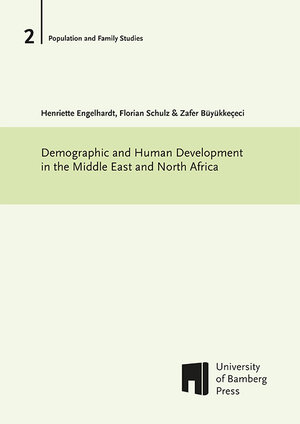
×
![Buchcover ISBN 9783863095475]()
Demographic and Human Development in the Middle East and North Africa
von Henriette Engelhardt, Florian Schulz und Zafer BüyükkececiIn this book, we study demographic developments in the Middle East and North Africa (MENA). In the past, the demographic developments in the Middle East and North Africa have been described as „peculiar“ and „unique“. In particular, the development of fertility got attention from a western point of view because it did not show the sharp decline with increasing development as the western countries did. Moreover, the growing population size and the bulk of young people caused worries, particularly in Europe, where a discussion about „the death of the West“ has started. Thus, the demographic processes in the Middle East and North Africa call for a closer inspection of the recent levels and tends. Surprisingly, there is not much literature on these countries, leading us to compile essential descriptive findings.
In the present book, we evaluate the current state and recent demographic developments in the MENA countries by presenting comparable and recent data on changes since 1950 and on the current characteristics of the population in the 22 countries of the Arab League (Algeria, Bahrain, the Comoros, Djibouti, Egypt, Iraq, Jordan, Kuwait, Lebanon, Libya, Mauritania, Morocco, Oman, State of Palestine, Qatar, Saudi Arabia, Somalia, Sudan, Syrian Arab Republic, Tunisia, United Arab Emirates, Yemen) plus three neighboring countries (Israel, Turkey, and Iran) using databases of various United Nations agencies and the World Bank. We deliberately refrain from discussing population forecasts which, due to assumptions underlying to them, would be worth to be discussed separately.
In the present book, we evaluate the current state and recent demographic developments in the MENA countries by presenting comparable and recent data on changes since 1950 and on the current characteristics of the population in the 22 countries of the Arab League (Algeria, Bahrain, the Comoros, Djibouti, Egypt, Iraq, Jordan, Kuwait, Lebanon, Libya, Mauritania, Morocco, Oman, State of Palestine, Qatar, Saudi Arabia, Somalia, Sudan, Syrian Arab Republic, Tunisia, United Arab Emirates, Yemen) plus three neighboring countries (Israel, Turkey, and Iran) using databases of various United Nations agencies and the World Bank. We deliberately refrain from discussing population forecasts which, due to assumptions underlying to them, would be worth to be discussed separately.


